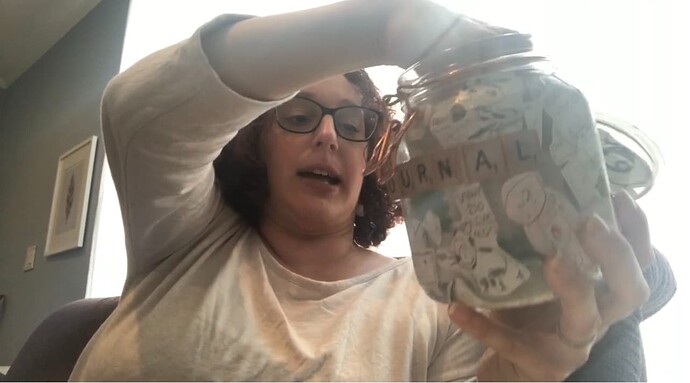To give some context for this, let me first tell you about Journal Time in my classroom. Every day we had Journal Time, and the goal was for students to write their answer to the question of the day. They could illustrate it as well, and over the course of the year the requirements for journal grew as students’ capabilities grew.
The question of the day was chosen daily from the “Journal Jar” (even through quarantine, I sent out videos of me pulling questions from the Journal Jar every day). The great thing about the Journal Jar was that anybody could put a question in - I started it of course, but then students would add questions regularly, so would parents, even other teachers.
actual footage from a Journal Question video Spring 2020… from my living room
I LOVED the Journal Jar for many reasons - first off, it gave my kids writing prompts that they cared about. Secondly, it gave us a concrete place to put questions that arose, but were maybe not related to what we were doing at the time, where students could feel confident letting their question go in the moment, because it would be addressed at another time.
You might be wondering where I’m going with this - so hear me out - a “Journal Jar” but for STEM Questions. I know we have all been in situations where students ask us questions, or share their curiosities and wonderings at moments when we can’t really address it - not because it’s a bad question, but just because of what is going on in the moment.
For some students having a burning question that just can’t be answered in the moment is a HUGE distraction, and can affect their ability to focus on the task at hand. Their curiosity is great, and something we want to support - so having a STEM Question Jar like this could be just that support!
You could use STEM Questions as writing prompts, as activities for students who finish building early, as a center-based activity, or as a fun conversational practice at the start or end of a day, week, or Unit! It’s a great way to revisit concepts and learning, to excite students about a topic or Unit you’re about to start, and to get students thinking critically and creatively about STEM concepts.
And once you get in the groove of using the jar, telling a student “That’s a GREAT question for the STEM Question Jar!” can make them feel heard, and gives them a tangible strategy for what to do with their question (so it doesn’t distract them during your lesson).
What do you think? Is this something you’d want to try? I’ll tag @Aimee_DeFoe, @Tina_Dietrich , @Desiree_White-Price and @Danielle_McCoy to get the ball rolling ![]()

